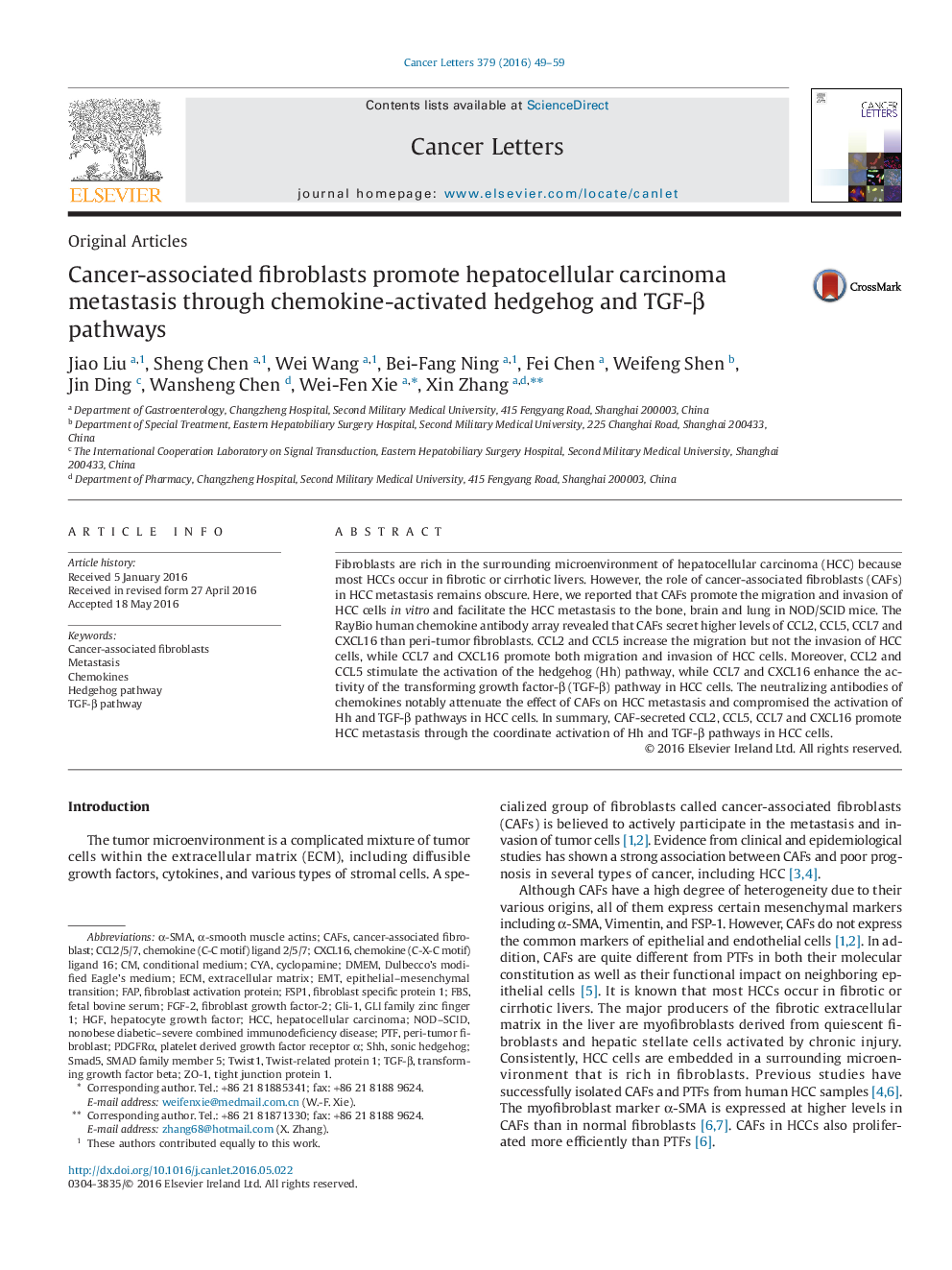| Article ID | Journal | Published Year | Pages | File Type |
|---|---|---|---|---|
| 2116104 | Cancer Letters | 2016 | 11 Pages |
•CAFs promote the malignancy of HCC cells in vitro and in vivo.•CCL2, CCL5, CCL7 and CXCL16 secreted by CAFs promote HCC cell migration and invasion.•Hh and TGF-β pathways are involved in the effect of CAF-secreted chemokines on HCC.
Fibroblasts are rich in the surrounding microenvironment of hepatocellular carcinoma (HCC) because most HCCs occur in fibrotic or cirrhotic livers. However, the role of cancer-associated fibroblasts (CAFs) in HCC metastasis remains obscure. Here, we reported that CAFs promote the migration and invasion of HCC cells in vitro and facilitate the HCC metastasis to the bone, brain and lung in NOD/SCID mice. The RayBio human chemokine antibody array revealed that CAFs secret higher levels of CCL2, CCL5, CCL7 and CXCL16 than peri-tumor fibroblasts. CCL2 and CCL5 increase the migration but not the invasion of HCC cells, while CCL7 and CXCL16 promote both migration and invasion of HCC cells. Moreover, CCL2 and CCL5 stimulate the activation of the hedgehog (Hh) pathway, while CCL7 and CXCL16 enhance the activity of the transforming growth factor-β (TGF-β) pathway in HCC cells. The neutralizing antibodies of chemokines notably attenuate the effect of CAFs on HCC metastasis and compromised the activation of Hh and TGF-β pathways in HCC cells. In summary, CAF-secreted CCL2, CCL5, CCL7 and CXCL16 promote HCC metastasis through the coordinate activation of Hh and TGF-β pathways in HCC cells.
